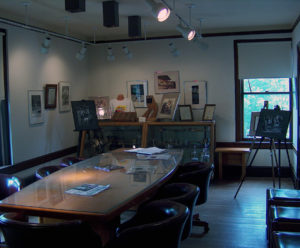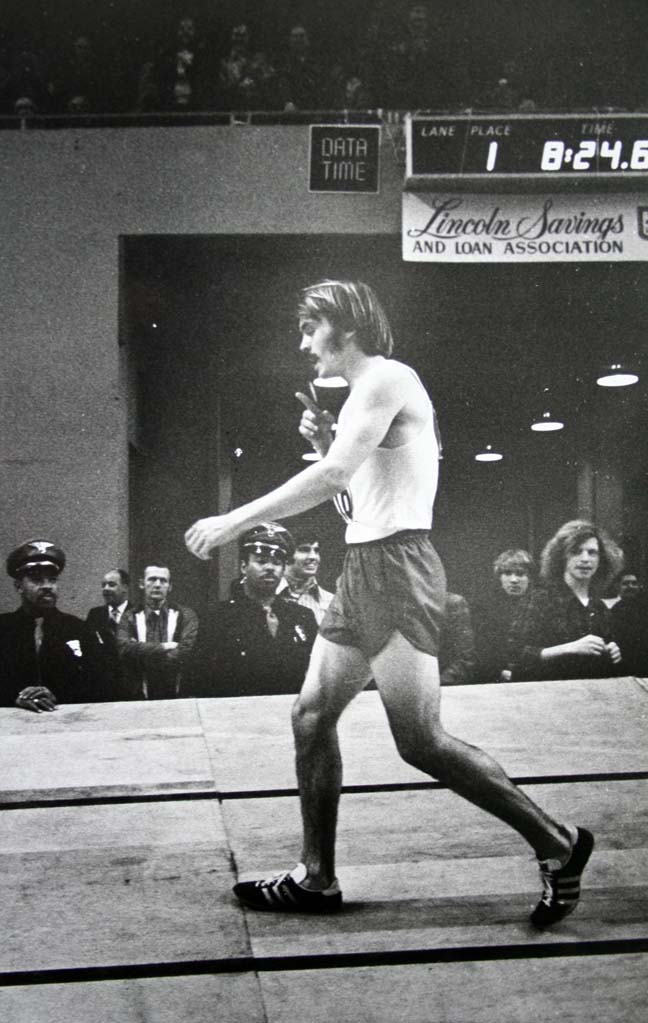Steve Prefontaine on My Mind
“A lot of people run to see who’s the fastest. I run to see who has the most guts.”
So said Oregonian Steve Prefontaine, who died in 1975 at the age of 24 when he crashed his sports car into a rock and prematurely ended a running career that saw him set 14 American records, including the high school two-mile mark (on a cinder track) that still stands. (Photograph of Pre here by Gerry Lewin.)
Pre hailed from Coos Bay, a gritty mill, fishing and port city on the remote South Oregon Coast. He was a logger’s son, too runty (or brooding) for football, so he took up running, trained relentlessly in the dunes, graduated from Marshfield High in 1969, and ran track for the University of Oregon where he turned running into a combination spectacle of performance art, animal instinct, existential abandon, rock and roll, Zen Buddhism and rebellion that nobody had ever seen before and would ever see again. Loggers and fishermen used to root for him to win. He got a whole state to take up running as exercise.
I’ve been thinking about Pre a lot these days—his reality, his metaphor, and the aforementioned quote. Do I have the guts to finish this race? It’s not about running the fastest. It’s not a race I can possibly win because it has no set distance or even a direction. It just keeps going and going, not around a track or along a cross-country course. It’s a race through the labyrinth of The Registry. I doubt Josef K would have finished or even broke a sweat.
“Guts.” Who uses that word in sports or life anymore? Let’s bring it back.
Pre would party all night and then wake up, win with a hangover and set an American record. He had hot groupies. He took off at the gun and ran competitors into the ground. People flocked to Hayward Field in Eugene to see him race and he made the city the track and field capital of the United States. He didn’t have a corporate sponsor. No one did then. It was the sham era of “amateurism” in world track and field (tennis too), and it amounted to one of the biggest cultural farces of the 20th century. He tended bar to make ends meet. He bucked hay.
I absolutely relish the idea of Pre serving dime drafts of Pacific Northwest lagers then brewed in the Pacific Northwest to Oregon Tavern Age men in Eugene. They probably hated his long hair but they had cheap beer in common and that soothed it out.
Pre won the 5000 meters at the 1972 Olympic Trials, went on to compete at the cursed Munich Games. As an eight-year old living in Oregon City in 1972, I was glued to a huge Zenith for the 5000-meter Olympic final. All of Oregon was. I will never forget watching that race, Pre running an uncharacteristic conservative race and getting nipped at the finish line for third place, losing out on the bronze medal. But we all knew he would back in ‘76, our Bicentennial year, to defeat the blood doping Finns and the chemically-enhanced East Germans.
I went out for track my seventh grade year in 1976 and ran distance. I wanted to be Pre. I had some success and even set a school record that spring for the 1320-yard race (three times around), a record that will never be broken because everything track and field in America changed over to the metric system a year or two later and they started running the 1500 meters. Thus, I live in sports immortality at Gardiner Junior High in Oregon City. I’ll gladly take it.
Really, though, I wasn’t Pre and couldn’t hack distance running. I quit that summer and took up tennis. I was never able to transfer his energy and spirit to the tennis court. I wish I had tried.
Pre is an American distance running legend and the toughest, most famous Oregon athlete of all time. It’s not a debate. They made a couple of movies about him, Billy Crudup and Jared Leto in the leads. They were mediocre and offered nothing in the way of mysticism about Pre. He was a mystic of movement and competition. His kind is impossible for a professional athlete today. Too much money at stake. Budweiser and a shoe company would own and geld him.
Several years ago, I found myself in Coos Bay with time to live. I suddenly remembered reading something about a Pre museum somewhere in the city. I found it by asking around town.
 Located in a small room on the second floor of the Coos Art Museum, is the Prefontaine Memorial Gallery. I was alone during my visit. It didn’t cost a cent.
Located in a small room on the second floor of the Coos Art Museum, is the Prefontaine Memorial Gallery. I was alone during my visit. It didn’t cost a cent.
There are photographs, his medals, trophies and awards. There is a Joint Resolution by the Oregon Legislature passed after Pre’s death that reads:
Whereas Steve Prefontaine died May 30, 1975; and
Whereas Steve Prefontaine was the nation’s most outstanding distance runner, holding American records at 3,000 meters, two miles, three miles, 5,000 meters, six miles and 10,000 meters; and
Whereas Steve Prefontaine came out of the Oregon coastal community of Coos Bay where he had been a national high school champion, went to the University of Oregon where he won the NCAA three-mile championship three times and the cross country title four straight years, and went to the 1972 Olympics in Munich where he placed fourth in the 5,000 meters; and
Whereas Steve Prefontaine drew admiration and respect as a sincere, outspoken and indefatigable advocate of a national program to enable amateur athletes to more effectively participate in international competition; and
Whereas Steve Prefontaine served as an inspiration for all those who wish to excel in life; now, therefore,
Be It Resolved by the Legislative Assembly of the State of Oregon:
That the Fifty-eighth Legislative Assembly mourns the death of a truly dedicated runner who brought much to all who were privileged to know him, Steve Prefontaine…
The crown jewel of the museum, easily my favorite museum in the world, is a large, handsomely bound register where visitors can record in their own writing what Pre meant to them. It took me 30 minutes to read all the messages, dating back to the late 1980s.
I started crying when I read them. People poured it out. There is nothing like this in the annals of American sporting history. When I finished, I knew I had read one of the most unique and moving testaments to the spirit of an American life that exists in our culture. And it’s in Coos Bay, Oregon! In a handwritten ledger!
Who signed in? Entire high school cross-country teams on a pilgrimage. Those who raced against Pre—and lost. His hometown buddies. Former Oregon Ducks. Europeans. Fans. What did they write? How about lines like, “I find Steve’s pure focus replenishing…Pre, thanks for reminding me why sports matter…I liked watching you run…”
I too, left my message for Pre: “You were a Stone Oregon God!”
Oddly enough, in the museum, I found no framed copy of a poem about Pre by Charles Ghigna that has been widely included in anthologies of sports poems. I tracked down Ghigna and secured his permission to reprint the poem. So here it is, from a poet who competed against Pre and LOST. (Who writes a poem about someone you beat?)
Prefontaine
He wore old Oregon on his chest,
a new mustache on his 24-year-old lip
and a scowl on his brow
that could jump out of his mouth
quicker than that famous final kick.
We all agreed
he could run and run and run
after women and whiskey and ribbons,
a chip off the old lumberjack block.
We in the stands gave our clapped-red hands
to him and his victory laps.
We watched and prayed for his runty form
under suns, gym ceilings and television rooms.
He stood us wild after each mile
witnessing his sudden bursts of speed.
We curse a coffin car we never saw.
You can’t Stop Pre. That kick. The guts.
(If you found this post enjoyable, thought provoking or enlightening, please consider supporting a writer at work by making a financial contribution to this blog or by purchasing an NSP book.)

